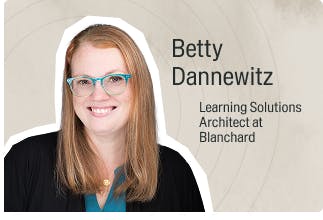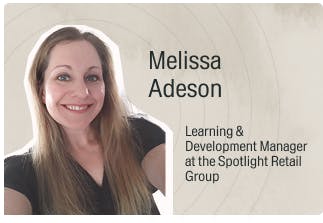Best practices in online and AI-enhanced learning with CHART Learning Solutions’ CEO, Peter Horwing
About the guest
A World Sailing Champion at 15, a management director for IBM's key Swedish partners, chairman in 15 countries on all continents and now the CEO of Chart Learning Solutions – a top-ranked Ed-tech company boasting a library of over 400 courses in leadership & sales. Peter's entrepreneurial journey is nothing short of awe-inspiring.
Peter has devoted his last 10 years to understanding and developing online education which makes impact within behavioral change. This has resulted in Chart Learning Solutions being globally recognized as one of the top leading online learning vendors.
Transcript
Dan: Welcome to L&D in 20, your go to resource for all things workplace learning brought to you by Go1. I'm your host, Dan Hayward, Chief Customer Officer here and industry veteran. Today we'll be speaking with Peter Horwing, founder and CEO of CHART Learning Solutions, a performance improvement powerhouse designed to help organizations reach new heights in leadership, sales, customer service, and more.
With over 450 award winning courses and a best-in-class chart learning management system, they combine technology and expert coaching to deliver results that stick. Peter, welcome to the show.
So the topic today that we're discussing is all around getting results from online learning, soft skills and upskilling the new generation. We're also going to sprinkle in some AI training in there as well.
As CEO of CHART Learning Solutions, you obviously have a lot of experience in online courses and creating online learning that gets results. Can you describe some of the best practices that you've seen and that you've developed to ensure that we're getting results from those online learning platforms?
Peter: Absolutely.
And I think it's a very important thing. Of course, if you look at online, online learning and looking behind, what has happened many times is that people do the online learning, it goes in from the left side, and then it goes out on the right side. And we saw that in our very early phase, and we actually stopped, and we went into research to understand how their brain actually work and how you can actually get the results out of the online learning.
And there are a number of things, which I believe many are now considering. First, you really need to know where and what you're looking for, and that could be research internally. See what skills, for example, in upskilling, and then you choose the high-quality learning online learning assets. That is normally combined with the knowledge checks, but in the next step, that's where things the magic could happen.
And we call that application activities. That's really how to start applying those skills right immediately after you do the training to translate that into your personal situation or your business situation. But you can also use this to do peer to peer coaching. When you do peer to peer coaching, you get another reflection moment on that.
We also, uh, encourage companies where possible to have communities set up so people could actually discuss things because these discussions, that's really building, you know, the confidence in doing the change and the learning. We also run what we call cohort training or group training. So, let's say we're now.
Having a training in performance management, then we apply those skills. We maybe discuss peer to peer, but we can also have a cohort. So, we actually get the best out of each other. And that's one level more than the traditional online learning where you just look into something, you go to the end, and you do a little quiz because it does not always stick.
So, there you have a typical example on how to move to the next step with online learning, especially. When we're talking about behavioural skills, so called soft skills.
Dan: And so that, that integrated kind of cohort or academy type approach, how do you, how do you ensure and motivate people to kind of do the activities post the, the online session?
Like, what are some of the ways that you've seen your clients engaging with their, their cohorts off platform to ensure that, you know, what’s required gets done?
Peter: Well, it is always a dialogue with the customer to have an understanding of the importance of doing training. I mean, we always emphasize that should be input from either the top management if it's a company or mid management.
It's to emphasize the importance of training. And actually when, when you mix people together, because all those assets are always supplied when we sell through go one or go direct. So, it is quite interesting for people. And we also see companies having different offices in different places, sometimes in different countries, and suddenly bring those people together.
They get to know each other. They may even learn different cultures. Why it's doing a time management training or coaching training or whatever is on the topic there.
Dan: Yeah, that's great. I know we spoke earlier a little bit about the difference between getting results and, and measurement or tracking. So maybe you could just share kind of your thought and your approach to that for, for the listeners.
Peter: Well, measurement, when you do a training, it's important to know why we're doing the training and we highly recommend, you know, very clear objectives or towards the business objectives. So, we connect that to the training, but it could also be a business objective. Say we are a leader, and we need to move that forward.
We may do, for example, emotional training. We have courses in leading with kindness. Which is closely connected, so that's a way for setting the targets. The measurements in the end should be measured towards the business objectives. But of course, you can also have with today advanced analysis, which are in many LMSs, we can also see other types, you know, how well are they performing?
We can see if there are things in the content which is actually not performing well. To reach these things, if there is a deviation on the outcomes. Yeah, fascinating.
Dan: And I know we also spoke about kind of generational needs and in particular kind of the incoming generation and the need for all of us as employees and, you know, educational establishments to focus on the soft skills.
So maybe you could talk to me a little bit about kind of how you're thinking or how, as an organization, you're, you're focusing on teaching these important intangible skills to different generations.
Peter: Yeah. And I think you're pointing out a very important thing here. Uh, I mean, first of all, the new generation and it's actually you and me also, what we really have to know is how to do great questions.
Because if we look into tools like artificial intelligence and generative AI. Which we actually had built into each and every course also, because when you do a training and then you try to see, okay, how does this fit into my situation, et cetera, you may have other ideas and then having the AI built into the training.
Well, I'm having a, a call with my employee tomorrow and I have a typical situation, then you've got the training, but you actually get some live input, which you can reflect upon. So, there you can see how we utilize AI, which also stimulates the new generation. So, it's not just as we had before, but we build that in as part of the training.
And we also see that many of the younger guys and girls out there, just great people, but they also have a technology background. Many of them, they had been thrown up with. The computers, they've been playing games. They've been doing all that stuff, but there are some time missing elements in, okay, how do I work with people?
The intercommunication, the communication skills, sometimes presentation skills, uh, influencing skills. In an organization. So, because if I have a good, great ideas, then being able to influence those ideas to other people so that we actually can move forward is so important. So soft skills for the new generation is so important and get them interested and part of that and build the bonds in between them, which you do.
With, for example, coaching sessions, et cetera.
Dan: Yeah, that's great. And I know you touched on AI there. Maybe we can just move on to AI upskilling. I know that, you know, it feels like we've been in the AI bubble for 80 months or so, and we know it's going to be huge for all of us moving forward. What are you observing about AI training?
Peter: Well, what we see right now is that it's on the table in each and every company. And, uh, I'm having also a podcast show called ‘Growth Leaders’ by shot. And we have this dialogue, and we see very different from company, how they approach it, what everyone do recommend. And also what we recommend is to make sure that we actually get project running and we can actually delegate the projects that we have, that if we take our own company, we really make sure each and every one is using this, even though they can think themselves, okay, just use it as a sounding board.
Maybe we need to create a new thing, have it as a sounding board in the credit to, to bring the ideas on, uh, and then we can move to the next, uh, as we have it also when we create or when we let customer create content today, we actually have the tools available to do fast tracking. Maybe we have been doing classroom training for product training within a company.
Well, now we can just bring that in. It does not cost much for the customer to get. Us or anyone else doing it, or you actually may have a resource who can do it in a very, very short time than you didn't have before. So I see this as a must for each and every one. And I just said to my wife the other day, I'm so happy living in today's world, being, seeing all these things.
happening and actually being part and doing the change in the industry and giving the tools to L& D and HR organizations around the world.
Dan: It's super exciting. I think kind of that, that efficiency, efficiency plan driver is, is one that a lot of customers are leveraging right now. Are there any mistakes that you've seen or anything you'd guard, guard L& D teams away from, from an AI at this point?
Peter: Clearly there, there are, I mean, AI. It has to be a tool where you always have to make your own judgments in the end. You cannot just trust out of the box because it's going to be your responsibilities. So that's, I mean, the wavering red flag.
Dan: Okay, fantastic. So now let's move on to our next segment. It's called the 60 second budget breakdown.
So can you share with us if you are advising L&D teams or an L&D leader? What are the three most important things that you'd spend your budget on right now?
Peter: Well, if I know what I want as an L&D, then I would really look out for where you find the high quality content. Where you actually know you get the results of the invested time for each and every employee.
So that's, that's clearly one of the most important pieces here. The other piece of me, which I should mention then is of course to make sure there is both on the individual, the accountability and the accountability, you build that through having the endorsement from the management. So this is what we're going to achieve.
We're going to reach this objective. This is why and then you build the accountability by the employees. Yes, I want to do that one actually show that we can provide straight results and I'm doing a good work so we grow all together.
Dan: And so is that accountability? Would you say that's kind of akin to the, it's a bit of a buzzword, but creating the culture of learning.
Is that, is that one of the first things like top down leadership setting expectations?
Peter: It is absolutely, and building the accountability into the training is vital to get the results. And there's a lot of small tools you do that through. I mean, clearly having a great analytic system is one, but having people seeing you, what you do and actually follow up.
So I was. The training them today. Have you actually tried out what we have learned today?
Dan: That's great. I'm making sure that the training is consistent with the, I guess, the objectives and the key goals of the organization. It feels congruent. I'm doing this for a reason, whether it's organizational or personal or community wise.
That's great, Peter. So let's move on to our next segment, Lifelong Learnings. I would love for you to describe a time Where a situation turned out differently than you expected, either positively or negatively, and most importantly, what you learned going through that.
Peter: Well, I'll go back to some older days.
Uh, you know, I'm a vivid sailor and a race sailor. I've been working, uh, as a coach or even up to national levels here. And I wrote a book and, you know, for me, how, how to become a successful sailor from a beginner to, to a champ. And, uh, before it was published by one of the known publisher, I got a request, well, we have about 15, 20 grownups adults here who was learned to say, yeah, I'll take that.
I'm going to go buy the book. And so I did. And what happened after two sessions, two weeks, and I came back, we don't understand what you're talking about. And that was a realization that. If you know a topic, a subject, and then you say, you're going to start teaching it, you really have to go down to your feet.
I thought I had done that since I'd been working with this so many years, but in reality, I was just down by my knees and I had to go all the way down to start all over. So I just had to go home and rewrite those two, two chapters. And that, that was a lesson learned. Okay. If you know a topic. Make sure you actually start from the scratch.
And if it's newbies out there, that's fantastic.
Dan: Well, yeah, meet the meet the learners where they are. And I didn't realize that you were, yeah, you were a sailor. I, I recently got my, my day skipper license. So yeah, I, I'm a beginner, but yeah, it's fantastic. Okay. So now for our final segment, self development hacks. In this segment, I'm just going to ask you, what's your favorite self development hack, your learning resource, or somewhere that you go to, to grow.
Peter: I think my, my hack is really my own curiosity. I think this is so super with things happening all the time. I mean, clearly the tablet is traveling with me all the time, but, but I really try to dig into everything on what is happening and try to translate that into, okay, what could that mean for us as a leading training company?
What could it mean for the customer? Implementing it and how to get the results. And you find so much things, uh, out there, which is great. Uh, but it's my own curiosity, curiosity, and that drives my motivation also.
Dan: That's great. I know we mentioned earlier a little bit about kind of your you're traveling, you're working kind of globally would be interested in your perspective of learning the cultural differences from a learning perspective and what you see and how as an organization you focus on that or you lean into ensure that again meeting the learners where they are not only kind of from a educational level but also culturally.
Peter: It's interesting because, you know, I've been living on a plane for 25 years. And when I started Short Learning Solutions, there were a few things. It should be 100 percent cloud based. And it should be independent where I am. And that means also we are a hundred percent virtual. We are a hundred percent remote.
We have all our employees spread around the world, which means we build the company with a high level of trust. We require our employees to think, and for me as a leader, I have to have a big cultural understanding that, okay, in India, this happens, if I'm Asian, this happens, and so on, and be humble, have an understanding for it.
Because that's the way many companies are moving. And as a leader, you have to get that understanding. And you can even ask, okay, I'm new to this country. So what should I do? What should I not do? Because just running the Western world or the U. S. world into it, it will not give the results we want to have.
Dan: Thank you, Peter. And thank you so much for coming on today's show and sharing your insights with us. Thank you so much, Dan. Great being with you. Thanks. So thanks for tuning into the show. I'm Dan Hayward, Chief Customer Officer, and that wraps up another great episode of L&D in 20. We hope you found today's discussion as engaging as we did.
Whether you're listening on the go, at your desk, we'll catch you on the next episode. And until then, keep learning.
Related Podcasts

Resilient Leadership in Times of Rapid Change with Betty Dannewitz, Learning Solutions Architect at Blanchard

Beyond the Launch: Turning Great Learning Programs into Lasting Engagement Campaigns with Melissa Adeson from Spotlight Retail Group

Building Learning Cultures: Aligning people, purpose and performance to make learning a habit with Melody Wong

Building thriving HR & L&D careers in the age of AI with Dr. Dieter Veldsman, Chief Scientist at the Academy to Innovate HR

Train smarter, spend less
Train smarter,spend less
Connect with a Go1 expert to explore the best training options for your organization—no pressure, just solutions that work.